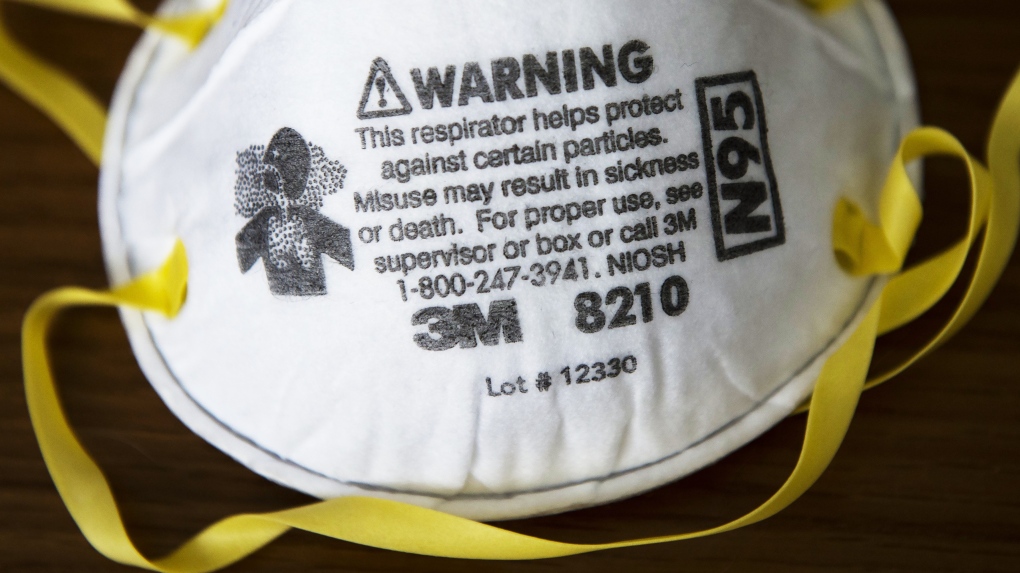'Mask Hacks' study suggests effective alternatives to N95s

Research by a University of Windsor scientist suggests wearing a two-ply cotton mask fastened tightly with ties over a basic medical mask offers similar protection as wearing an N95 mask.
In his ongoing research related to COVID-19 and its variants, School of the Environment professor Ken Drouillard, is participating in a “mask hacks” study by a team at McMaster University led by researcher Catherine Clase.
The study involved testing various masks, and combinations of masks and mask-wearing devices, to find those with the best performance ability to filter out aerosol-sized particles.
“This is timely information for the public,” said Drouillard. “Given the high community risk factors posed by the Omicron variant and the scarcity of N95 masks in some provinces, we want to be able to help people use the best mask they have access to.”
Drouillard’s spouse, Rebecca Rudman, is one of the founders of the Windsor-Essex Sewing Force. The group of community volunteers has produced tens of thousands of cloth masks donated to frontline workers and vulnerable populations.
Drouillard has lent his expertise to the project and has recruited other UWindsor scientists to perform tests on various mask designs and fabrics to ensure the volunteers could produce the most effective masks possible.
Drouillard and the McMaster team performed tests on masks used in combination with those produced by the local group of sewing volunteers. Using a TSI portacounter— the same device used for fit-testing N95 masks— they tested the concept of “double-masking”— wearing two masks at a time.
He said the most effective was wearing a two-ply, pleated cotton mask with cotton straps tied snugly over a standard medical mask.
Not all medical masks are created equal, Drouillard explained.
True medical-grade masks are certified by ASTM, an international standards organization. Certified ASTM masks bear the organization’s name on the box. There are three grades of masks available, the L1 being the cheapest and most accessible. The higher grades relate to the mask’s ability to prevent fluids from soaking into them and are generally used only in hospital settings, Drouillard explained.
Research testing results:
- -Drouillard’s testing has shown an L1 alone, worn snugly on the face, filtered out 54 per cent of particles. -A two-ply, pleated mask made of high-quality quilting cotton and with ties rather than ear loops provided 55 per cent effectiveness.
- -In combination, with the cloth mask with ties worn over the L1, the filtration rate was nearly 91 per cent.
- -Drouillard said that with double masking, it is the medical mask underneath that is doing most of the aerosol filtering. The cotton mask with ties mainly acts to improve the fit of the medical mask underneath. This prevents leakage from the medical mask which can be as high as 50 per cent when worn alone.
- Drouillard said testing has shown the two-ply cotton masks can be washed dozens and dozens of times without affecting their performance.
- -When wearing a mask brace, a contraption made of silicone straps you wear around your head over a mask, worn over an L1 medical mask has a filtration rate of 82 per cent.
- -Masks made of quilting cotton with strings that tie around the back of your head are 55 per cent effective in filtering out particles because they fit more snugly.
- -The same cotton mask with ear loops is only 50 per cent effective in filtering out particles because it has more leaks than the one with ties, Drouillard said.
CTVNews.ca Top Stories

Former soldier 'Canadian Dave' taken by the Taliban: sources
David Lavery, a former Canadian Forces soldier who helped approximately 100 people flee Afghanistan during the fall of Kabul, has been 'picked up' by the Taliban this week, according to multiple sources who spoke to CTV National News on the condition of anonymity.
Canada Revenue Agency eliminating nearly 600 term positions by end of 2024
The Canada Revenue Agency will be eliminating approximately 600 temporary and contract employees across the country by mid-December.
Montreal road rage caught on video: Suspect charged with assault causing bodily harm
A 47-year-old Terrebonne man has been charged following a case of road rage in broad daylight last summer on the Ile-aux-Tourtes bridge.
Alta. Premier Danielle Smith will be in Washington for Trump inauguration
Alberta Premier Danielle Smith will be heading to Washington, D.C., for Donald Trump's presidential inauguration.
WestJet passengers can submit claims now in $12.5M class-action case over baggage fees
Some travellers who checked baggage on certain WestJet flights between 2014 and 2019 may now claim their share of a class-action settlement approved by the British Columbia Supreme Court last month and valued at $12.5 million.
Trump names Karoline Leavitt as youngest ever White House press secretary
U.S. President-elect Donald Trump on Friday named Karoline Leavitt, his campaign press secretary, to serve as his White House press secretary.
Mike Tyson vs. Jake Paul: How to watch the fight, what time and who's the favourite?
YouTuber-turned-boxer Jake Paul had to wait an extra four months for his high-profile match with 58-year-old former heavyweight champion Mike Tyson, but fight night has arrived.
Iranian official met with Musk in a possible step to ease tensions with Trump
Iran successfully sought a meeting with Elon Musk, according to a U.S. official, one in a series of steps that appeared aimed at easing tensions with President-elect Donald Trump.

































